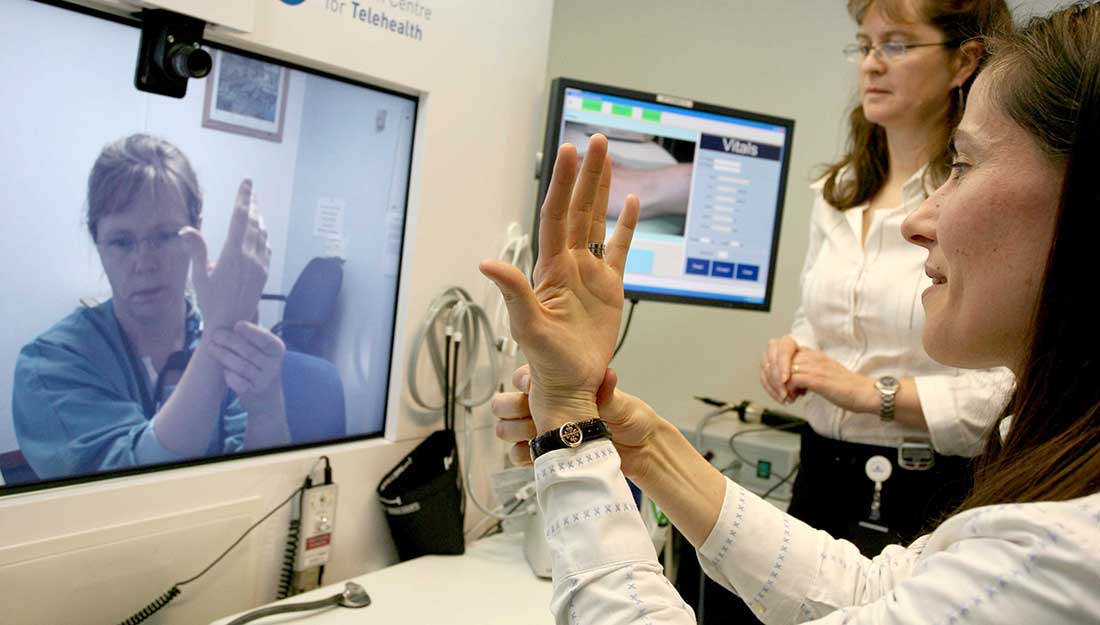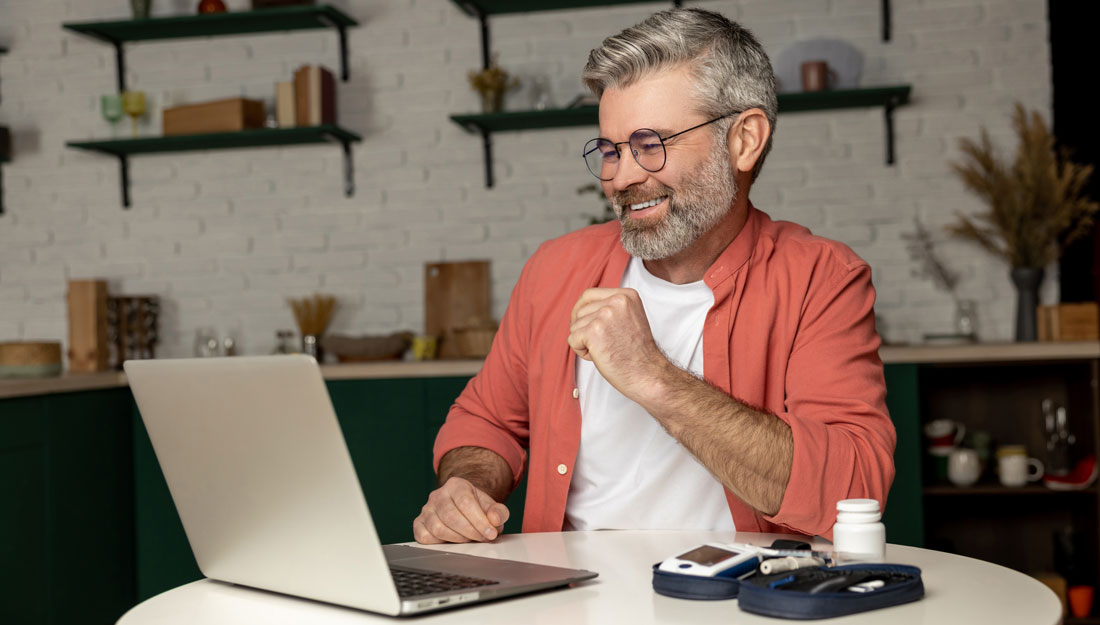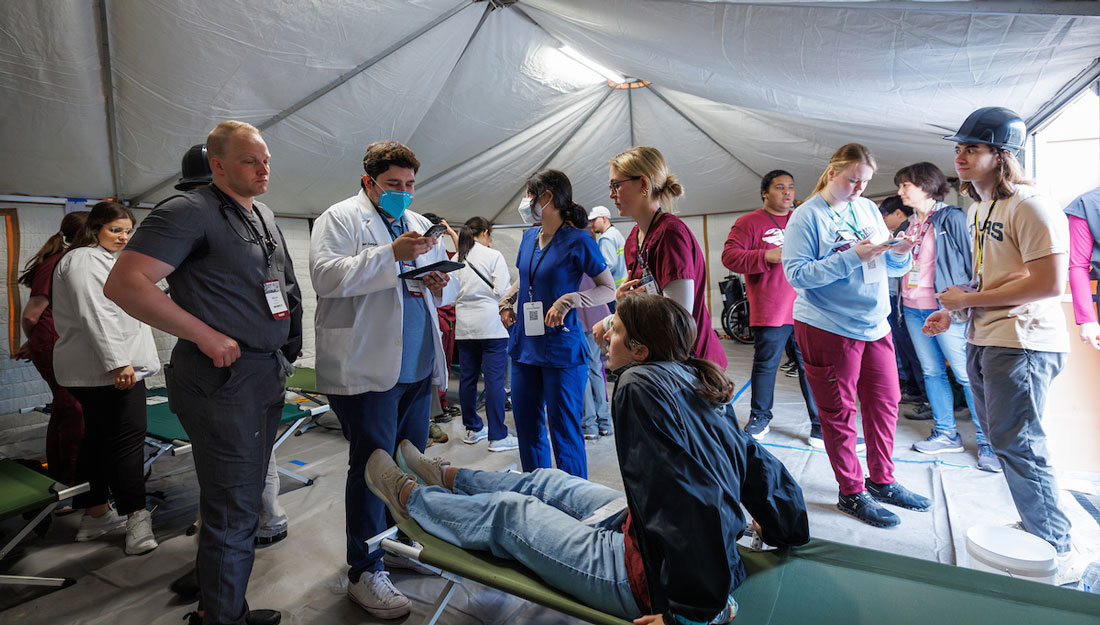How counselors are using telehealth to reach underserved populations

As telehealth takes off as the next big way to provide cost-effective health care to underserved populations, a group at Texas A&M University sees it as confirmation of what they’ve been doing for years.
The Texas A&M Telehealth Counseling Clinic utilizes doctoral students in psychology to provide mental health counseling to people in rural areas of the Brazos Valley region who would otherwise lack such services. The graduate counselors work out of their clinic’s offices on the Texas A&M campus in College Station, but the clients stay near their homes in five Brazos Valley counties. A secure, high-speed video link connects the two.
“I don’t know of any other university that is doing what we’re doing,” said Carly E. McCord, PhD, a licensed psychologist with the Center for Community Health Development at the Texas A&M School of Public Health and the director of clinical services at the Telehealth Counseling Clinic. “My goal is to use a consulting model to replicate what we’ve done here elsewhere and train as many students as possible.”
It’s a mutually beneficial relationship. Students get training and experience with the technology and with different populations—experience that will serve them well when they begin their professional practice. “There’s a huge gap between where technology has grown to be and what many of our young professionals will be prepared to fully utilize when they graduate,” McCord said.
The counties served benefit too in the form of health care cost savings. “There is a cost avoidance factor if we can keep people from going to the emergency room every time they have a panic attack, and I’ve heard anecdotally we do,” McCord said. “Still, it’s important to remember that although cost savings can help convince counties to participate, the primary goal is quality care for patients.”
Part of that quality is the fact that people get better access to care because they don’t have to travel an hour or more to Texas A&M. Instead, it is only one of several services offered at Health Resource Centers throughout the Brazos Valley region. These locations, which started as a collaboration between the Center for Community Health Development and the local communities, also offer other services that the community needs, including senior home-delivered meals, anger management and parenting classes, case management, legal aid and medication assistance programs.
“The people in the community are what have made this program so successful,” McCord said. “That’s the public health mindset that I wasn’t taught in my counseling graduate training,”
The clinic is an interdisciplinary collaboration between the Texas A&M School of Public Health and College of Education and Human Development. In addition to using educational psychology students as counselors, the clinic employs public health students in research and outreach positions. To date, they’ve served more than 550 clients and provided over 5,000 counseling sessions.
The experience the students get counseling rural residents can translate well to post-graduation jobs as therapists for other underserved populations, such as veterans and inmates.
“One of the ugly open secrets about our country is that the correctional system is now the single largest provider of mental health services in the nation,” said Tim Elliott, PhD, professor in the Texas A&M School of Public Health and executive director of the Telehealth Counseling Clinic. “I know from my conversations with local officials that telepsychology is desperately needed.”
One study found no significant differences between in-person and telehealth counseling sessions in prisons, and state, federal, and private prison systems are using telepsychology—even if Texas hasn’t quite caught up. “In Virginia, a former student of mine is the director of mental health services for the commonwealth prison system,” Elliott said, “and they use telepsychology routinely and have for years.”
Other former Texas A&M students go on to work for the U.S. Department of Veterans Affairs (VA), which McCord says is the largest provider of telehealth services. “The VA demonstrated that telepsychology services reduced inpatient mental health care utilization by 25 percent, and although rates vary, it costs at least $400 per day to keep someone in an inpatient facility,” McCord said. A 2010 report by the Texas Hospital Association shows the average inpatient stay in areas around the Brazos Valley is about eight days. Therefore, for each person the clinic can keep out of inpatient care, at least $3,200 is likely saved.
“Most everyone who is appropriate for outpatient counseling is also a good fit for telehealth,” McCord said. “Most of the time it’s still just two people trying to connect and find a solution.”
Media contact: media@tamu.edu


